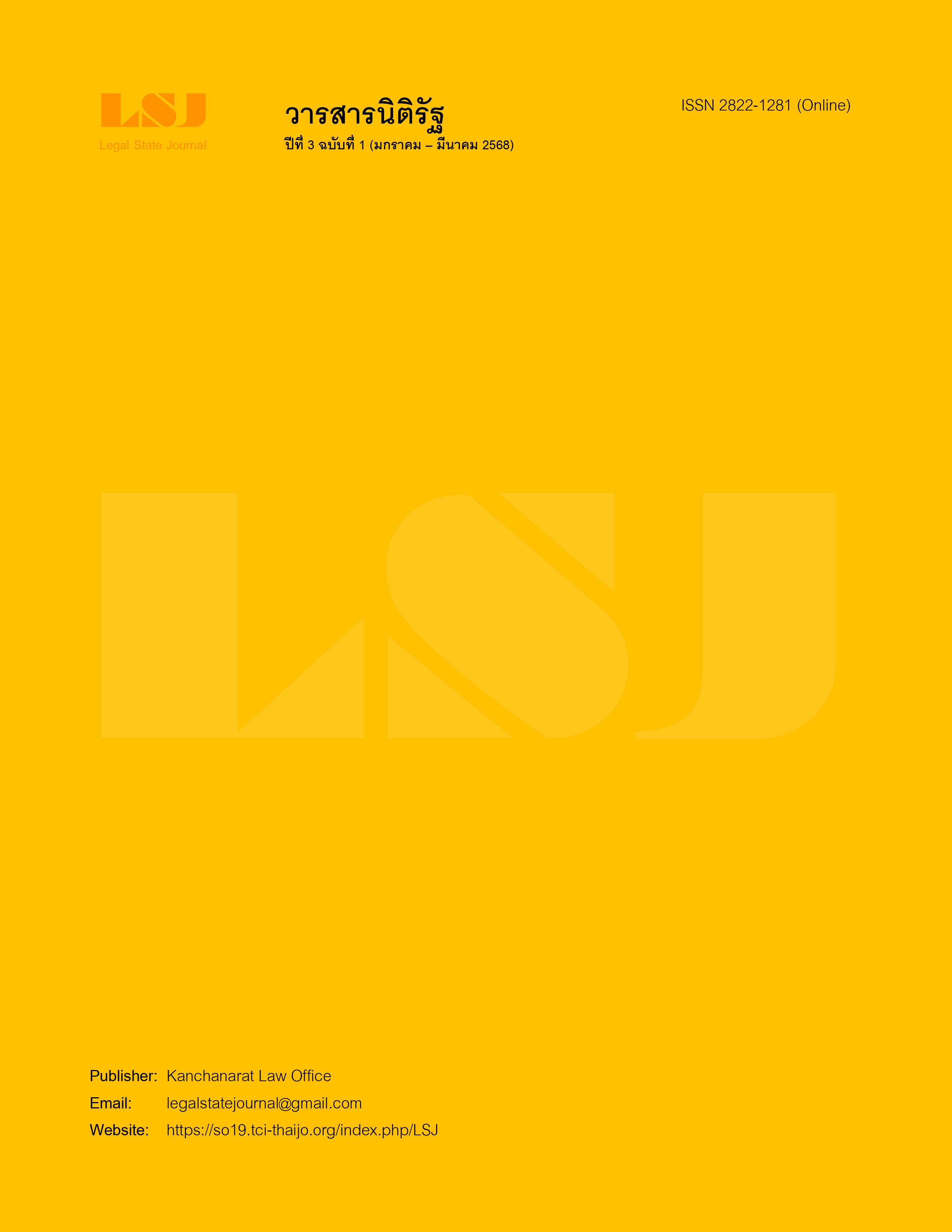The Development of a Digital Technology Media Archives to Improve the Quality of Education in Schools Under the Office of the Basic Education Commission
Main Article Content
Abstract
This research article aims to study the status, necessity and guidelines, develop a system and a manual, study the system using and the manual, Assessment and certification, and develop policy proposals of using digital technology media archives to improve the quality of education in schools under the Office of the Basic Education Commission. The research and development by using questionnaire and focus group discussion. The sample consists of 379 teachers responsible for ICT under the Office of the Basic Education Commission using a multi-stage random sampling method and 152 educational supervisors responsible for promoting and developing educational innovation media and technology in the Office of the Educational Service Area using a simple random sampling method. The statistics including percentage, mean, standard deviation, the modified priority needs index technique to rank the necessities, and content analysis. Findings are as follows: (1) The current condition of using digital technology media archives overall at a moderate level. The desired condition of using digital technology media archives overall at a high level. The adjusted need index is between 0.424-0.462. The guidelines of using digital technology media archives should apply the concepts of lifelong learning, blended learning, participation, sustainable development, and Deming cycle. The guidelines for developing of using digital technology media archives should develop various aspects, including platforms and service systems, content, tools and services, promotion, and management. (2) The system development and manual of using digital technology media archives are all appropriate, accounting for 100 percent. (3) The evaluation of teachers’ learning management efficiency, students’ satisfaction with teachers’ learning management, teachers and educational supervisors’ satisfaction with the use of using digital technology media archives were at the highest level, and the quality of students in terms of academic achievement and desirable characteristics passed the specified evaluation criteria. (4) The assessment and certification of using digital technology media archives in terms of feasibility and utility overall at the highest level. (5) The develop policy proposals of using digital technology media archives including the Office of the Basic Education Commission, the Office of the Educational Service Area, and the school levels. Overall at the highest level.
Article Details

This work is licensed under a Creative Commons Attribution-NonCommercial-NoDerivatives 4.0 International License.
The article published in the journal is the opinion and responsibility of the authors. Not related to Kanchanarat Law Office.
References
กรภัทร คำโส, วรปภา อารีราษฎร์ และธรัช อารีราษฎร์. (2565). การประยุกต์ใช้เทคโนโลยีดิจิทัลในการจัดกิจกรรมการเรียนรู้แบบบูรณาการตามแนวทางสะเต็มศึกษาด้วยกิจกรรมการเดินเมือง. วารสารมหาวิทยาลัยราชภัฏมหาสารคาม, 16(3), 141-149.
กฤชพร สินพรม และสถิรพร เชาวน์ชัย. (2565). แนวทางส่งเสริมการจัดการเรียนรู้ด้วยสื่อดิจิทัลของครู สังกัดสำนักงานเขตพื้นที่การศึกษาประถมศึกษาเพชรบูรณ์ เขต 3. วารสารศึกษาศาสตร์ มหาวิทยาลัยศิลปากร, 20(1), 159-175.
จุลลดา จุลเสวก. (2560). แนวทางการพัฒนาการใช้สื่อการเรียนการสอนของครูในโรงเรียนมัธยมศึกษา สังกัดสำนักงานเขตพื้นที่การศึกษามัธยมศึกษา เขต 17. วารสารวิจัยรำไพพรรณี, 11(1), 90-99.
ธันยวิช วิเชียรพันธ์. (2562). ผลของการใช้ระบบอาณาจักรการเรียนรู้ดิจิทัลของนักเรียนในสถานศึกษา สังกัดเขตพัฒนาพิเศษเฉพาะกิจจังหวัดชายแดนภาคใต้. วารสารวิจัย สมาคมห้องสมุดแห่งประเทศไทย, 12(2), 35-52.
วิโรจน์ สารรัตนะ. (2555). แนวคิด ทฤษฎี และประเด็นเพื่อการบริหารทางการศึกษา (พิมพ์ครั้งที่ 8). ทิพย์วิสุทธิ์.
สุรเชษฎ์ เพ็ญพร, สุทธิพงศ์ หกสุวรรณ และสุรเชต น้อยฤทธิ์. (2560). พัฒนาระบบการใช้สื่ออิเล็กทรอนิกส์สำหรับโรงเรียนประถมศึกษา. วารสารวัดผลการศึกษา มหาวิทยาลัยมหาสารคาม, 23(1), 264-277.
สำนักงานคณะกรรมการการศึกษาขั้นพื้นฐาน. (2567). แผนพัฒนาการศึกษาขั้นพื้นฐาน (พ.ศ. 2566-2570) ของสำนักงานคณะกรรมการการศึกษาขั้นพื้นฐาน. ผู้แต่ง.
สำนักงานเลขาธิการสภาการศึกษา. (2562). รายงานการศึกษาแนวปฏิบัติของการสร้างและส่งเสริมการรู้ดิจิทัลสำหรับครู. ผู้แต่ง.
สำนักงานสภาพัฒนาการเศรษฐกิจและสังคมแห่งชาติ. (2565). แผนพัฒนาเศรษฐกิจและสังคมแห่งชาติ ฉบับที่ 13 (พ.ศ. 2566-2570). ผู้แต่ง.
เอก กนกพิชญ์กุล, ธรัช อารีราษฎร์ และจรัญ แสนราช. (2561). การพัฒนารูปแบบการประยุกต์ใช้เทคโนโลยีสารสนเทศเพื่อส่งเสริมทักษะชีวิตสำหรับนักเรียนชั้นประถมศึกษา. วารสารเทคโนโลยีอุตสาหกรรม มหาวิทยาลัยราชภัฏอุบลราชธานี, 8(1), 37-48.
Bondar, I. (2023). Integration of electronic resources in library environment of higher education institutions: Advantages and challenges. Retrieved from https://ouci.dntb.gov.ua/en/works/7WwyLvw7
Constantakis, P. (2016). Integrating digital tools for adult learners: Four critical factors. Retrieved from https://waalc.org.au/wp-content/uploads/2022/11/dp-integrating_digital_tools.pdf
Ghosh, D., & Pramanik, S. (2020). Sustainability of digital libraries: A review. Journal of Cultural Heritage Management and Sustainable Development, 10(1), 53-71.
Guskey, T. R. (2000). Evaluating professional development. Corwin Press.
Organisation for Economic Co-operation and Development. (2019). Digitalisation and productivity: A story of complementarities. Author.
Pluzhnyk, O., Berezanska, I., & Drok, P. (2023). The role of digital technologies in improving library and information communication: Trends and challenges. Society. Document. Communication, 8(3), 55-65.
Yamane, T. (1973). Statistics: An introductory analysis (3rd ed.). Harper & Row.

